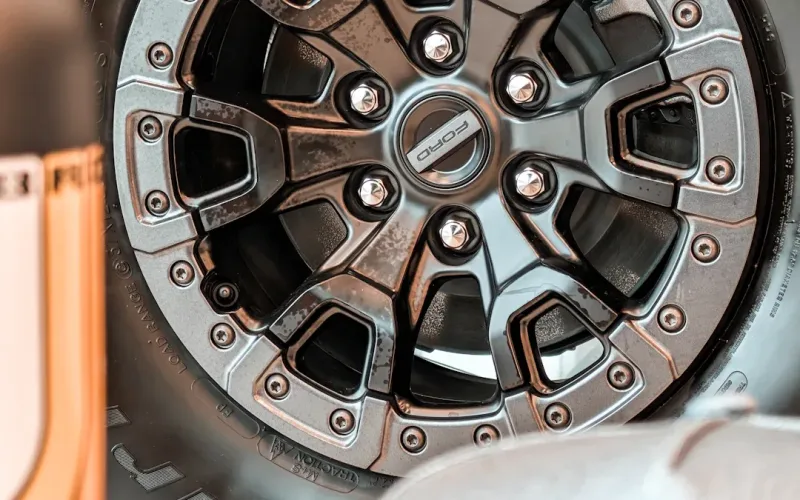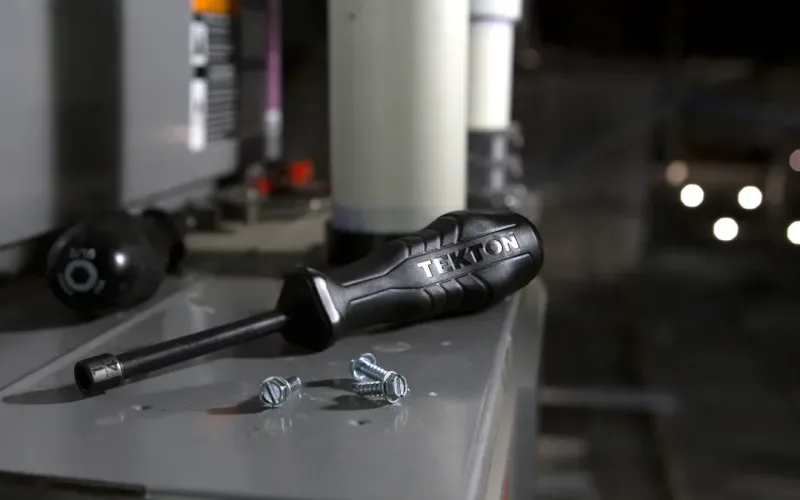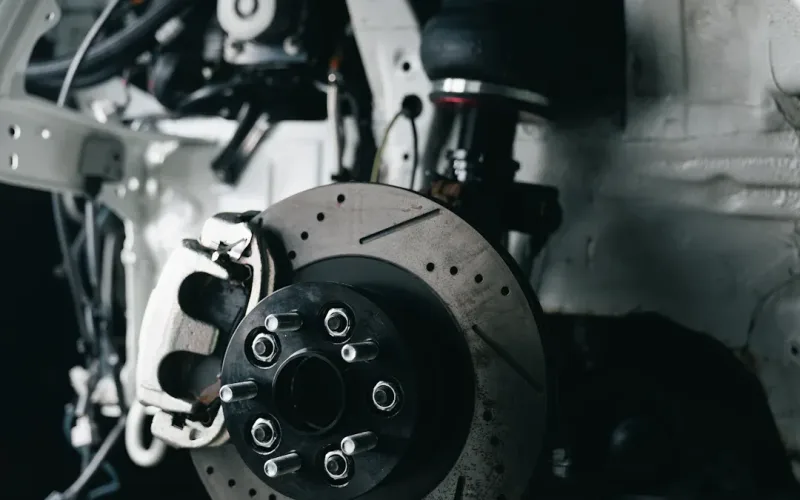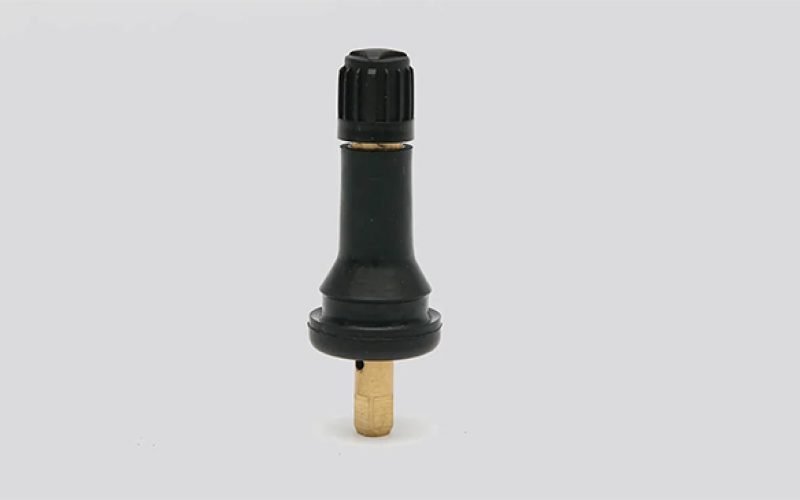

admin1
July 25, 2025
Can You Fix a Tyre Valve Stem Leak Without Removing the Tire
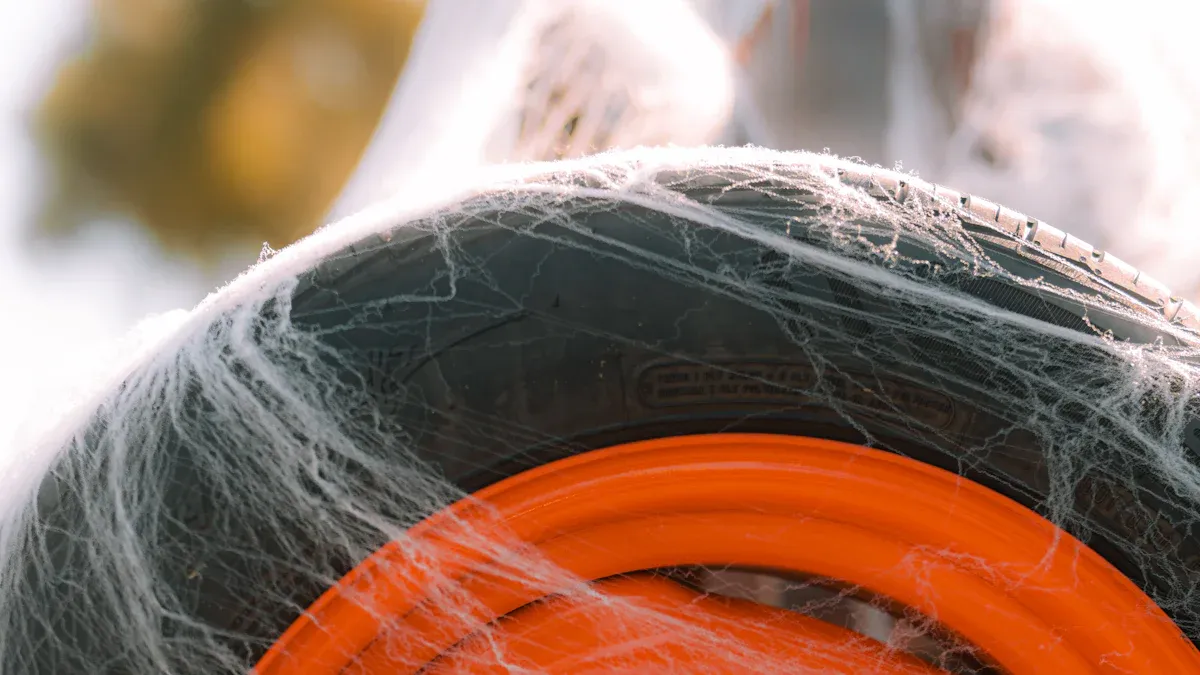
You might notice your tire losing air slowly and wonder why. Often, a worn or damaged tyre valve stem is the culprit. Sun, rain, and road salt can make the valve stem brittle or cracked, leading to a leaky tire valve. Dirt and debris can also cause leaks if the cap goes missing. Thankfully, you can usually fix the tyre valve stem without taking the tire off the wheel, especially when the leak comes from age or weather exposure.
When to Change a Tire Valve Stem Without Removing the Tire
Suitable Situations for Tyre Valve Stem Repair
You might wonder if you can fix your tire without taking everything apart. In many cases, you can! If you notice air leaking from the valve core—the small part inside the valve stem—you can often replace a valve stem core without removing the tire. All you need to do is deflate the tire, use a valve stem tool, and swap out the core. This quick fix works well when the leak comes from inside the stem.
If you need to replace a valve stem because it leaks around the outside or looks damaged, you can sometimes do this without taking the tire off the wheel. Here’s when it usually works:
- The leak is at the base or outside of the stem, not just the core.
- You can break the bead of the tire near the valve stem. This means you push the tire away from the rim just enough to reach the stem.
- You have the right tools, like a valve stem puller and tire irons.
- The tire bead separates easily, letting you work around the stem.
Tip: If you can break the bead and reach the stem, you can replace a valve stem without fully removing the tire. This saves time and effort.
Limitations and When to Avoid This Method
Sometimes, it’s better to let a professional handle the job or remove the tire completely. Here are some reasons why:
- The tire bead won’t separate, or you can’t reach the valve stem.
- The valve stem is stuck or damaged beyond a simple fix.
- You risk damaging the tire bead if you force it.
- Improper installation can cause leaks or poor sealing.
- If you use a valve stem puller without removing the tire, air can escape quickly and damage the bead.
- Dirt, missing caps, or corrosion can make the job harder and less safe.
Regular inspection helps you spot problems early. If you see cracks, missing caps, or signs of corrosion, you may need to replace a valve stem soon. Always use care and the right tools to keep your tire safe.
How to Confirm a Tyre Valve Stem Leak

Common Signs of a Leaking Valve Stem
You might spot a leaky tire valve before it causes bigger problems if you know what to look for. Here are some signs that tell you something’s wrong:
- Cracks in the rubber part of the valve stem, especially near the base where it meets the wheel.
- A missing or damaged valve cap, which lets dirt and moisture get inside.
- Corrosion or rust on metal valve stems, often from road salt or water.
- Hearing a faint hissing sound when you get close to the valve stem.
- Noticing your tire loses air faster than normal, even after you fill it up.
Tip: Always inspect your valve stems during regular tire checks. For most drivers, every three months works well. If you drive a lot or manage a fleet, monthly inspections help catch leaks early.
If you see any of these signs, you might have a leaky tire valve. Catching these clues early can save you from a flat tire or a roadside emergency.
Simple Leak Detection Techniques
You don’t need fancy tools to check for leaks in your valve stem. Try these easy methods at home:
- Visual Inspection: Look closely at the valve stem for cracks, splits, or damage. Use a flashlight if needed. Flex the stem gently to spot hidden cracks.
- Listen for Air: Remove the valve cap and listen for a soft hissing sound. Sometimes, you can even feel air escaping with your hand.
- Soapy Water Test: Mix a little dish soap with water. Brush or spray it onto the valve stem. If you see bubbles forming and growing, you’ve found a leaky tire valve.
- Submerge in Water: If you can, submerge the valve stem in a bowl of water. Watch for bubbles rising—this means air is escaping.
- Monitor Tire Pressure: Check your tire pressure regularly. If you notice it keeps dropping, even after refilling, the valve stem could be the problem.
These steps make it easy to check for leaks before they turn into bigger issues. If you find a leaky tire valve, you can fix it before it leaves you stranded.
Tools and Materials Needed to Change a Tire Valve Stem
Changing a valve stem on your tire is much easier when you have the right tools ready. You do not need a full mechanic’s shop, but a few key items will make the job smoother and safer.
Essential Tools for How to Change a Valve Stem
You want to start with the basics. Here are the must-have tools for anyone learning how to change a valve stem:
- Valve stem tool: This handy tool helps you pull out the old stem and install the new one. You will use it to grip and guide the stem through the rim.
- Valve core removal tool: This small tool lets you unscrew the core inside the valve stem. Removing the core helps you deflate the tire quickly and swap out a leaky core.
- Replacement valve stem: Make sure you have the right type for your vehicle. Most passenger cars use tubeless rubber snap-in stems, which fit snugly and create an airtight seal. Some trucks or racing vehicles use high-pressure or metal clamp-in stems. Check the table below for a quick guide:
| Valve Stem Type | Common Use Case | Material | Max Inflation Pressure | Key Notes |
|---|---|---|---|---|
| Tubeless Rubber Snap-In | Passenger cars, light trucks | Rubber | 65 psi | Flexible, easy to install, needs regular checks for cracks or leaks. |
| High-Pressure Snap-In | Medium/heavy trucks, trailers | Rubber + metal barrel | 80-100 psi | Thicker, handles more pressure, install carefully to avoid leaks. |
| High-Pressure Metal Clamp-In | Racing, heavy-duty, high-speed | Brass or stainless steel | Up to 200 psi | Strong, resists corrosion, needs careful installation and regular maintenance. |
- Tire pressure gauge: Always check your tire pressure after replacing the valve stem to make sure it is safe to drive.
- Air compressor or tire inflator: You will need this to refill your tire once the new stem is in place.
Tip: Always wear safety gloves to protect your hands from sharp edges or pinches during the process.
Optional Tools for Easier and Safer Repair
Some extra tools can make your job much easier and help you avoid mistakes. You might not need all of these, but they can save time and effort:
- Dedicated rim pry bars help you remove and replace valve stems without damaging the rim.
- Ratchet straps can help you seat the tire bead safely, so you do not have to use risky methods.
- Affordable tire changers, like the $40 Harbor Freight tire changer, make breaking the bead and changing valve stems much simpler.
- The QuikStem tool lets you replace a valve stem quickly without removing the tire, which is great for roadside fixes.
- Propane torches are sometimes used to seat the bead by heating the rim, but use caution and only if you know what you are doing.
- Extra valve cores and caps are good to have on hand for quick swaps.
Having the right tools on hand makes learning how to change a valve stem much less stressful. You will work faster, safer, and with better results.
How to Change a Valve Stem Without Removing the Tire
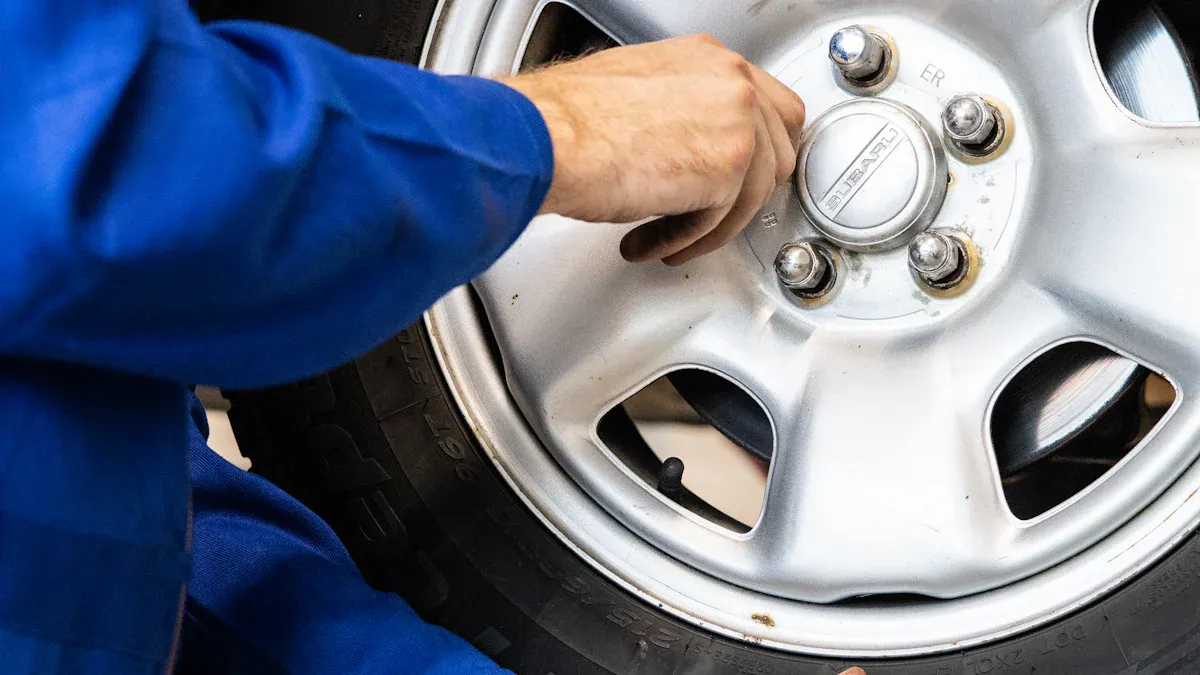
Preparing the Vehicle and Tire
Getting ready is the first step when you want to replace a valve stem without removing the tire. You want to make sure you have everything you need before you start. Here’s how you can prepare:
- Park your vehicle on a flat, stable surface. Use the parking brake so your car does not roll.
- Gather your tools. You will need a valve stem tool, a valve core remover, a replacement valve stem, a jack, and a tire pressure gauge. Some people use special valve stem repair kits, like Colby Valve or QuikStem, which let you install a new stem from outside the rim. These kits work well if you are off-roading or cannot remove the tire easily.
- Loosen the lug nuts on the wheel just a little. Do not take them off yet.
- Use a jack to lift the car so the tire you want to work on is off the ground. Place a jack stand under the car for extra safety.
- Remove the wheel from the car if you want more space to work. This step is optional, but it can make things easier.
Tip: Always double-check that your car is secure before you start working on the tire. Safety comes first!
Safely Deflating the Tire
Now you need to let the air out of the tire. Doing this the right way keeps you and your tire safe. Here’s what you should do:
- Take off the valve cap from the tire’s valve stem.
- Use a valve core removal tool to unscrew the valve core. Turn it counterclockwise. Air will start to come out.
- Let all the air escape slowly. Do not rush this step. If you let the air out too fast, you might damage the tire or the rim.
- Once the tire is flat, set the valve core aside in a safe place. You will need it later if you plan to reuse it.
Some people try to deflate a tire by drilling a hole, but that ruins the tire. Always use the valve core tool for a safe and controlled deflation. If you have pliers or a valve stem puller, keep them nearby for the next steps.
Note: Lowering the car slightly so the tire touches the ground can help keep it steady while you work, but do not put your hands under the tire.
Breaking the Bead Near the Tyre Valve Stem
Breaking the bead means you push the edge of the tire away from the rim. This step lets you reach the old valve stem and replace it. You want to do this gently so you do not hurt the tire or the rim.
- Place the tire flat on the ground with the valve stem facing up.
- Use a manual bead breaker or a sturdy pry bar to press down on the tire right next to the valve stem. Some people use the weight of the car by lowering it onto a block placed on the tire’s sidewall, but be careful not to damage the rim or brakes.
- Work slowly and move around the valve stem area. Massage the tire bead with your hands to help it slip away from the rim.
- If the bead is stuck, you can use a little soapy water or bike cleaner as a lubricant. This helps the tire slide off the rim more easily.
- Avoid using impact tools or too much force. Gentle pressure and patience work best.
- Once you have a small gap, you can reach in and grab the old valve stem.
Tip: If you have a Presta valve, remove the core first to let air flow out faster. For most car tires, just make sure the tire is fully deflated before you start.
Breaking the bead can take some effort, but with the right tools and a careful touch, you can get to the valve stem without damaging your tire. Now you are ready to replace a valve stem and finish the job.
Removing the Old Valve Stem
You have the tire bead broken and the area around the valve stem exposed. Now you can remove the old valve stem. Start by grabbing the base of the valve stem from inside the rim. You might need pliers or a valve stem puller for this step. Grip the stem firmly and pull it straight out. Sometimes, the rubber can stick, so twist it gently as you pull. If you use a valve stem puller, hook it onto the stem and use steady pressure. The stem should pop out with a little effort.
Tip: If the valve stem feels stuck, spray a bit of soapy water around the base. This helps loosen it and makes removal easier.
Check the hole in the rim after you remove the stem. Wipe away any dirt or debris. Make sure the hole is smooth and free of sharp edges. If you see any damage, you should not continue. A damaged rim can cause leaks or make it unsafe to replace a valve stem.
Installing the New Valve Stem
Now you are ready to install the new valve stem. Take your replacement stem and push it through the hole from the inside of the rim. The thick rubber base should sit flush against the rim. If you have a valve stem puller, thread it onto the new stem. Pull the stem until you hear or feel it snap into place. The rubber lip should seal tightly against the rim.
If you do not have a puller, you can use pliers, but be careful not to damage the new stem. Hold the stem straight and pull firmly. You want a snug fit so air cannot escape. Double-check that the stem sits evenly and does not tilt.
Note: Always use a high-quality replacement valve stem. Products from trusted manufacturers, like Fortune, help ensure a proper seal and long-lasting performance.
You have now learned how to change a valve stem without removing the tire. This method works well for most passenger vehicles and light trucks. If you need to replace a valve stem on a high-pressure or metal stem, follow the instructions that come with your specific part.
Re-inflating and Reseating the Tire
With the new valve stem in place, you can re-inflate the tire. First, make sure the tire bead sits evenly on the rim. Use your hands to press the tire into position. Attach your air compressor or tire inflator to the new valve stem. Add air slowly. Watch the tire bead as it starts to seat against the rim. You might hear a pop as the bead snaps into place. This is normal.
Check the tire pressure with a gauge. Fill the tire to the recommended PSI listed on your vehicle’s door sticker or owner’s manual. Do not overinflate. Once the tire is at the right pressure, screw the valve cap back on.
Safety Alert: Stand to the side as you inflate the tire. If the bead seats suddenly, you want to stay clear of any movement.
Inspect the tire for leaks. Spray soapy water around the new valve stem and the bead. Look for bubbles. If you see any, you may need to reseat the tire or check the stem for proper installation.
You have finished the job! You can now put the wheel back on your vehicle and tighten the lug nuts. Lower the car and do a final check of the tire pressure. You have just completed a safe and effective way to replace a valve stem and fix a tyre valve stem leak.
Safety Checks and Final Steps After You Change a Tire Valve Stem
Testing for Leaks After Repair
You want to make sure your repair worked before you hit the road. The best way to check for leaks is with a simple soapy water test. Here’s how you do it:
- Mix a little dish soap with water in a spray bottle or bowl.
- Spray or brush the soapy water onto the valve stem, the tire bead, and the sidewall.
- Watch closely for bubbles. If you see bubbles forming, air is escaping and you still have a leak.
- If you do not see any bubbles but your tire keeps losing air, it is a good idea to ask a professional to take a look.
This quick test helps you spot problems right away. Always check for leaks after any repair to keep your tire safe.
Safety Tips and Mistakes to Avoid
You want your tire repair to last, so pay attention to these safety tips and avoid common mistakes:
- Always lift and secure your vehicle safely before starting work.
- Loosen the lug nuts a little before you jack up the car.
- Remove all the air from the tire by taking out the valve core before you try to remove the stem.
- Use the right tools for the job. Do not force the old valve stem out.
- Make sure the new valve stem sits snugly in the rim. If it is not tight, you could get another leak.
- Reseat the tire bead properly before you add air.
- Inflate the tire to the recommended pressure and check for leaks again.
- Never skip safety steps, especially if your tire has a TPMS sensor.
Mistakes like using the wrong tools, not deflating the tire fully, or rushing the job can lead to leaks or even damage. Take your time and double-check your work.
When to Seek Professional Help
Sometimes, a tire valve stem repair can be tricky. If you feel unsure about breaking the tire bead or do not have the right tools, it is smart to visit a tire shop. Professionals have the skills and equipment to do the job safely. The cost is usually low, and you get peace of mind knowing your tire is fixed right. If your tire has a TPMS sensor or you cannot stop a leak, let an expert handle it. Your safety always comes first.
Fixing a tire valve stem leak without removing the tire can save you time and money if you use the right tools and follow safety steps. Always choose quality parts from trusted brands like Fortune. If you skip safety guidelines, you risk serious accidents, injuries, or even legal trouble—some repairs done wrong have led to big lawsuits and warranty loss. When in doubt, let a professional handle the job. For many DIYers, careful repair is a smart and practical choice.
FAQ
How long does it take to change a tire valve stem without removing the tire?
You can usually finish this job in 20 to 40 minutes. If you have all your tools ready and follow each step, you will save time. Practice makes the process even faster.
Can I drive with a leaking valve stem?
You should not drive with a leaking valve stem. Air can escape quickly, and you might end up with a flat tire. This can damage your wheel or cause an accident. Always fix leaks before driving.
What type of valve stem should I use for my car?
Most passenger cars use tubeless rubber snap-in valve stems. Trucks or high-performance vehicles may need metal or high-pressure stems. Check your owner’s manual or ask a tire professional if you are unsure.
Do I need to balance my tire after changing the valve stem?
You do not always need to rebalance your tire after changing the valve stem. If you did not remove the tire from the rim or add wheel weights, your balance should stay the same. If you feel vibration, get your tire checked.
Tip: Always use a quality valve stem from a trusted brand like Fortune for the best results.


